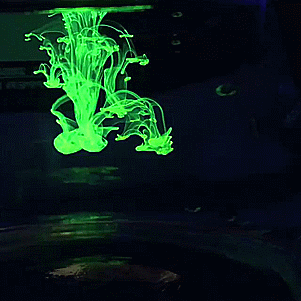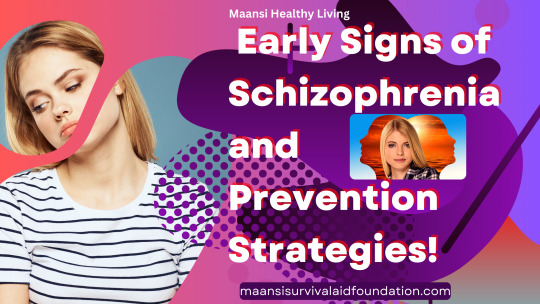#Early Detection
Explore tagged Tumblr posts
Text
Hide your kids, hide your wives. It's TICK SEASON in Kentucky. Tick season peaks in Spring and Summer, though they're a threat year-round. The most common ticks in Kentucky are the American Dog Tick (Dermacenter variabilis) and Lone Star Tick (Amblyoma americanum). Their bite can transmit Rocky Mountain Spotted Fever, Lyme Disease, and a whole host of other potentially fatal conditions. Early detection and appropriate treatment are necessary in case of infection. If you’re in doubt, have a doctor check it out. They’d rather give you doxycycline for “no reason” than wait until your joints are so swollen and inflamed that you can’t walk. Trust me, I have been there.
In March, the Kentucky legislature approved Senate Resolution 32 advocating for “information on prevention and personal protection and raising public awareness of the causes, effects, potential severity, diagnosis challenges, and treatment options of tickborne diseases and illnesses,” to be accomplished in a coordinated effort with the Kentucky Department of Agriculture, the Department of Fish and Wildlife Resources, and the Department for Public Health. The desire is to raise awareness among average Kentuckians and to better educate our healthcare providers about the risks, warning signs, and courses of treatment. Officials in Louisville, KY, ask their residents who find a tick to share it through the Spot A Tick And Share Program, launched in 2022. The program allows environmental health specialists to identify and monitor the tick populations in the Louisville Metro area, as well as the diseases they transmit. Many local, state, national, and even online programs have been developed to contribute to this valuable data collection. Ask your local health department and nearby universities if they have data collection programs. If they don’t, you can still contribute to an online program like Tick Quest or use an app like TickTracker. You must prevent infection by protecting yourself and checking yourself. If you or your pet do experience a suspicious tick bite, please seek a medical evaluation. Sources: KDFW KY SR32 LouisvilleKY.gov Science Direct SciStarter's Tick Quest Tick Tracker App WDRB
#Kentucky#ticks#dog ticks#lone star ticks#rocky mountain spotted fever#Lyme disease#illness#early detection#treatment#disease#healthcare#medicine#pathogens#tick borne illness#illnesses#spring#summer#Lyme#outdoors#pests#parasites#dogs#Kentucky legislature#senate#SR32#awareness#prevention#department of agriculture#department of fish and wildlife resources#department for public health
4 notes
·
View notes
Text
youtube
#cancer prevention#healthy lifestyle#balanced diet#physical activity#tobacco-free#alcohol moderation#cancer screening#HPV vaccine#Hepatitis B vaccine#early detection#genetic testing#cancer awareness#risk reduction#public health#nutrition and cancer#cancer risk factors#weight management#immune support#preventive healthcare#lifestyle medicine#Youtube
2 notes
·
View notes
Text



Early detection saves lives. 💚🎗
#💚#🎗️🎗️🎗️#gallbladder cancer#february#early detection#🐸#🐊#🐢#🦎#year of the snake 🐍#mod 🐲#🐉#🦖#🐛.txt#🪲#🌳#🌴#🌲#🌵#🍈#🍏#🥦#🥬#🍐#🫛#🫑#🥝#🧩#🟢#🟩
2 notes
·
View notes
Text

#geocities#kawaii aesthetic#kawaiicore#old web#pink asethetic#pink tumblr#pink blog#pink vibes#pinkcore#y2k blog#breast cancer awareness#breast cancer#baby pink#pastel pink#light pink#pink aesthetic#pink moodboard#pink#womens health#health#early detection
8 notes
·
View notes
Text

I wanted to thank everyone who reached out to me yesterday. Your love and kind words will help carry me through this next journey in my life. Cancer is a serious disease and early detection can save your life. I’m usually a pretty private person and keep to myself so sharing this is difficult for me. Get the scans, talk to your doctor and get the treatments. Life is short, don’t let cancer take it away from you.
#beat cancer#fuck cancer#early detection#utah#nature#desert southwest#wildlife#birding#bird watching#greatsaltlake#lee kay ponds#great blue heron
7 notes
·
View notes
Text

femalequotient
2 notes
·
View notes
Text

My hubster is having a preventative colonoscopy today. (DO NOT SKIP THESE AFTER 40!!) These are some of the books in the waiting room...🤣
4 notes
·
View notes
Text
Early Signs of Schizophrenia and Prevention Strategies!
Schizophrenia, a complex and often misunderstood mental disorder, affects millions of individuals worldwide. It is characterized by a range of symptoms that impact thoughts, emotions, and behavior. While the exact cause of schizophrenia remains elusive, early detection and intervention are crucial for managing the condition effectively. In this article, we delve into the early signs of…

View On WordPress
#Cognitive health#Early detection#Early intervention#Mental health awareness#Mental health education#Mental health prevention#Mental health promotion#Mental health support#Mental wellness strategies#Preventing schizophrenia#Psychiatric disorders#Psychosis signs#Schizophrenia awareness#Schizophrenia risk factors#Schizophrenia symptoms
3 notes
·
View notes
Text
How Lifestyle Changes And Early Detection Can Help Prevent Ovarian Cancer - News18
Last Updated:May 08, 2025, 14:52 IST Ovarian cancer is often diagnosed late due to subtle early symptoms and limited screening options, leading to low five-year survival rates. Genetic counselling is crucial for those with family history of ovarian cancer. World Ovarian Cancer Day, marked on May 8 every year, highlights a critical women’s health issue in India. According to GLOBOCAN 2022…

View On WordPress
#Early Detection#Genetic Risk Factors#health and fitness#Healthy Lifestyle#lifestyle#Ovarian Cancer#Ovarian Cancer Awareness#Ovarian Cancer Prevention#Ovarian Cancer Symptoms#Women&x27;s Health
0 notes
Text
The Role of Biotech Unicorns in Revolutionizing Cancer Therapy

In the ever-evolving healthcare landscape, few areas have seen more transformational growth than cancer therapy. While traditional pharmaceutical giants have long dominated oncology, a new class of players biotech unicorns is emerging as a major force reshaping how cancer is diagnosed, treated, and even prevented. These high-valuation startups are not only driving innovation but also challenging established norms in cancer care, bringing agility, novel technologies, and disruptive thinking to the forefront.
Today, cancer remains one of the leading causes of death in the United States, with the American Cancer Society estimating nearly 2 million new cases will be diagnosed in 2025. In this high-stakes environment, the need for groundbreaking solutions has never been greater. Biotech unicorns, companies valued at over $1 billion, are stepping up to meet this demand with pioneering approaches to cancer therapy.
Why Biotech Unicorns Matter in Cancer Therapy
Biotech unicorns bring a different mindset to the healthcare space. Unlike larger pharmaceutical firms, these companies are often more willing to take risks on experimental treatments, unproven technologies, and bold ideas that could redefine cancer therapy. They operate at the intersection of science, technology, and patient-centric innovation, offering fresh hope where traditional treatments have fallen short.
Take, for example, companies like Moderna and Grail. While Moderna gained widespread recognition during the COVID-19 pandemic for its mRNA technology, its research in cancer vaccines is progressing rapidly. Grail, another biotech unicorn, is working on early detection blood tests that could identify cancer before symptoms even appear. These innovations could shift the focus of cancer therapy from reactive treatment to proactive prevention.
Key Areas Where Biotech Unicorns Are Revolutionizing Cancer Therapy

[Source - Tempus]
1. Precision Medicine
One of the most significant advancements driven by biotech unicorns is in precision medicine—tailoring cancer therapy to the genetic profile of an individual patient. Startups like Tempus are using artificial intelligence and massive genomic databases to help doctors design personalized treatment plans. This approach not only increases effectiveness but also reduces the severe side effects often associated with traditional cancer treatments.
By analyzing vast amounts of genetic data, biotech unicorns are enabling a new generation of therapies that are more targeted and efficient, moving away from the "one-size-fits-all" model that has long dominated cancer care.
2. Immunotherapy Innovations
Immunotherapy has emerged as one of the most promising fields in cancer therapy, and biotech unicorns are leading the charge. Companies like Allogene Therapeutics are developing off-the-shelf CAR-T therapies, which modify a patient's immune cells to better recognize and attack cancer cells.
Unlike conventional treatments like chemotherapy and radiation, immunotherapy harnesses the body’s natural defenses. This not only offers a higher success rate for some types of cancer but also reduces the collateral damage to healthy tissues. Biotech unicorns are pushing the boundaries of immunotherapy by making it more accessible, scalable, and affordable.
3. Liquid Biopsies and Early Detection
Early detection is critical for successful cancer therapy, yet traditional methods like imaging and tissue biopsies can be invasive, costly, and slow. Biotech unicorns such as Grail and Freenome are developing liquid biopsy technologies—simple blood tests that can detect cancer in its earliest stages.
According to a report from the American Society of Clinical Oncology, early detection can increase five-year survival rates by as much as 90% for some cancers. The widespread adoption of liquid biopsies could fundamentally change cancer therapy by catching the disease when it is most treatable, drastically improving patient outcomes.
4. AI and Machine Learning in Oncology
Another arena where biotech unicorns are making waves is the use of artificial intelligence (AI) and machine learning. Companies like PathAI and Tempus are employing AI algorithms to better predict treatment responses, analyze pathology images, and discover new drug targets.
Integrating AI into cancer therapy allows for faster, more accurate diagnoses and the development of highly customized treatment plans. The potential cost savings and improved patient outcomes from AI-driven oncology solutions could have a profound impact on the U.S. healthcare system, making advanced cancer care more accessible to all.
The Business Dynamics Behind Biotech Unicorn Success

Biotech unicorns are flourishing in part because of robust investment trends. According to CB Insights, biotech startups attracted over $45 billion in global funding in 2024, with a substantial portion directed toward oncology-focused firms. This influx of capital enables these companies to invest heavily in research and development, accelerate clinical trials, and fast-track promising therapies to market.
Moreover, the U.S. regulatory environment has become increasingly supportive of innovative cancer therapies. Programs like the FDA's Breakthrough Therapy Designation and Accelerated Approval pathways have streamlined the process for bringing groundbreaking cancer treatments to patients faster.
Collaborations between biotech unicorns and larger pharmaceutical companies also play a pivotal role. These partnerships combine the innovation and agility of startups with the resources and global reach of established players, creating a synergistic model for revolutionizing cancer therapy.
Challenges Ahead for Biotech Unicorns in Cancer Therapy
Despite the optimism, biotech unicorns face formidable challenges. Bringing a new cancer therapy from lab to market remains an expensive, complex, and high-risk endeavor. The average cost to develop a new oncology drug can exceed $2.5 billion and take over a decade.
There are also ethical considerations around access and affordability. Will revolutionary cancer therapies be available only to the wealthy, or can they be scaled for broader accessibility? Biotech unicorns must navigate these questions carefully to ensure that their innovations do not inadvertently widen healthcare disparities.
Moreover, scientific breakthroughs do not guarantee commercial success. Regulatory hurdles, clinical trial failures, and unforeseen side effects can derail even the most promising cancer therapies. The pressure to deliver both medical miracles and financial returns is intense.
Looking Ahead: The Future of Cancer Therapy

As biotech unicorns continue to mature, their influence on cancer therapy will only grow stronger. Emerging areas like gene editing, nanomedicine, and personalized cancer vaccines offer tantalizing possibilities for even more precise and effective treatments.
Additionally, the integration of wearable technologies, real-time patient monitoring, and decentralized clinical trials will enable more patient-centric approaches to cancer therapy. Biotech unicorns are well-positioned to capitalize on these trends by staying nimble, innovative, and relentlessly focused on unmet needs.
The future of cancer therapy is being shaped right now in startup labs and incubators across the U.S.—places where ambition meets urgency, and where the next wave of life-saving treatments is being born.
Conclusion
The rise of biotech unicorns represents a pivotal shift in the world of cancer therapy. These nimble, innovative companies are not just complementing traditional pharmaceutical efforts; they are redefining what’s possible in oncology. By bringing cutting-edge science, AI-driven insights, and a bold entrepreneurial spirit to healthcare, biotech unicorns are giving new hope to millions of patients and transforming the future of medicine.
As we look toward a new era in cancer therapy, one thing is clear: the next breakthroughs will likely come not from the boardrooms of legacy firms but from the vibrant, fast-moving world of biotech startups.
Uncover the latest trends and insights with our articles on Visionary Vogues
0 notes
Text
Comprehensive Eye Exams: Why They’re More Important Than You Think
Many people assume that unless they experience vision problems, they don’t need regular eye exams—but this couldn’t be further from the truth. This post will highlight how comprehensive eye exams can detect not just refractive errors but also early signs of serious eye conditions like glaucoma, cataracts, diabetic retinopathy, and even systemic diseases like hypertension. It will walk readers through what to expect during a complete exam, including visual acuity tests, slit lamp examinations, tonometry, and retinal imaging. The article will also outline how often exams are recommended based on age and risk factors. By demystifying the exam process and emphasizing its value for preventive health, the blog aims to motivate more people to prioritize regular eye care.
1 note
·
View note
Text
youtube
#Colorectal cancer#colon cancer#rectal cancer#polyps#malignant tumors#colonoscopy#screening#early detection#chemotherapy#radiotherapy#immunotherapy#surgical treatment#biomarkers#genetic testing#risk factors#inflammatory bowel disease#family history#cancer prevention#survival rate#tumor progression.#Youtube
0 notes
Text
Worried about lung cancer? You shouldn't be! Learn everything you need to know about lung cancer screening and take control of your health. Click here to read our essential guide! #LungCancerScreening #LungHealth #PreventiveCare
#cancer prevention#Early Detection#Health Awareness#LDCT scan#lung cancer screening#lung health#Preventive Care#smoking history
1 note
·
View note
Text
Lung Cancer Trends: Why Non-Smokers Are Affected
What’s Going On? Picture this: overall lung cancer rates are dropping because fewer people are smoking—great news! But here’s the twist: among people who’ve never smoked, the numbers are creeping up. It’s not a huge spike, but enough to catch attention. Studies are showing that in places like South Asia, more than half of lung cancer cases in women are in non-smokers. That’s a big shift from…
#Asian populations#cancer#cancer prevention#cooking practices#early detection#EGFR mutation#health#health news#lung cancer#non-smokers#radon gas#secondhand smoke#smoking#targeted therapy#wellness#women’s health
0 notes
Text
Vaginal bleeding after menopause is how my mom learned she had cervical cancer. It was quickly corrected and she lived nearly 30 years after that. ALWAYS get unusual bleeding checked out!
There's a post going around Tumblr about how if you're post-menopausal and have bleeding, you should get it checked by your doctor. I brought some minor bleeding I'd had up in a doctor visit earlier this year, prompted by that post, and this week, after a biopsy, I found out I have cancer. It's early stage and the survival odds at 5 years are 99%. I have an oncologist appointment and we may have caught it early enough that surgery alone will be sufficient treatment (no radiation/chemo).
So that post may have saved my life and it may have made my treatment a lot easier too.
If you get into menopause and then start bleeding again, really, get your reproductive innards checked out. The life you save may be your own.
62K notes
·
View notes
Text
How DNRC Uses AI & Imaging for Early Detection of Eye Diseases
Dr. Dudhabhate Netralaya & Retina Centre (DNRC) is at the forefront of innovation in eye care, utilizing Artificial Intelligence (AI) and advanced imaging technologies to detect eye diseases early and accurately. These cutting-edge tools enhance diagnostic precision, allowing for timely intervention and better vision outcomes.

🔍 AI-Powered Early Detection: A Game Changer in Eye Care
AI is revolutionizing ophthalmology by analyzing vast amounts of eye imaging data to detect diseases in their earliest stages — often before symptoms appear. At DNRC, AI-driven screening is used for:
✅ Diabetic Retinopathy Detection — AI can analyze retinal scans to detect even the smallest changes in blood vessels caused by diabetes, helping prevent vision loss.
✅ Glaucoma Screening — AI detects subtle optic nerve changes that indicate glaucoma, allowing for early treatment before permanent damage occurs.
✅ Age-Related Macular Degeneration (AMD) Diagnosis — AI enhances OCT imaging to identify early macular changes, crucial for preventing central vision loss.
✅ Corneal Disease Detection — AI-powered topography and pachymetry scans help identify conditions like keratoconus and dry eye disease earlier.
📸 Cutting-Edge Imaging Technologies at DNRC
1️⃣ Optical Coherence Tomography (OCT)
Provides high-resolution, cross-sectional images of the retina.
Detects early changes in glaucoma, macular degeneration, and diabetic retinopathy.
2️⃣ AI-Enhanced Fundus Photography
Captures detailed images of the retina.
AI algorithms analyze these images for microaneurysms, hemorrhages, and other retinal abnormalities.
3️⃣ Fluorescein Angiography (FA)
A dye-based imaging technique used to visualize retinal blood flow and detect abnormalities in conditions like diabetic retinopathy and retinal vein occlusion.
4️⃣ Ultra-Widefield Retinal Imaging
Captures a detailed 200° view of the retina, identifying peripheral retinal issues often missed in traditional scans.
5️⃣ Corneal Topography & AI-Assisted Analysis
Maps the cornea’s surface to detect conditions like keratoconus at an early stage.
Used for LASIK and cataract surgery evaluations.
🌍 Why AI & Imaging Matter for Early Eye Disease Detection
🔬 Faster, more accurate diagnosis — AI minimizes human error and ensures consistent, high-precision results. 👁 Detects diseases before symptoms appear — Prevents irreversible vision loss. ⏳ Saves time & enables quick treatment — Early intervention means less invasive, more effective treatments. 💡 Customized patient care — AI-based analysis personalizes treatment plans for each patient.
📢 Conclusion: DNRC Leads the Way in AI-Powered Eye Care
At DNRC, AI and imaging technology are transforming eye disease detection, ensuring patients receive the most advanced and timely care. With state-of-the-art diagnostic tools, DNRC is committed to preventing blindness and preserving vision for a lifetime.
📞 Book Your AI-Powered Eye Screening at DNRC Today!
0 notes